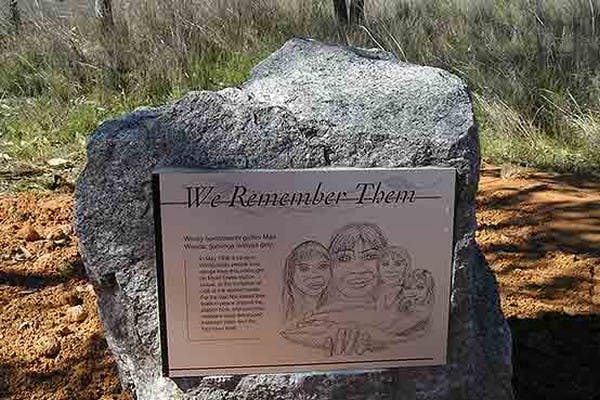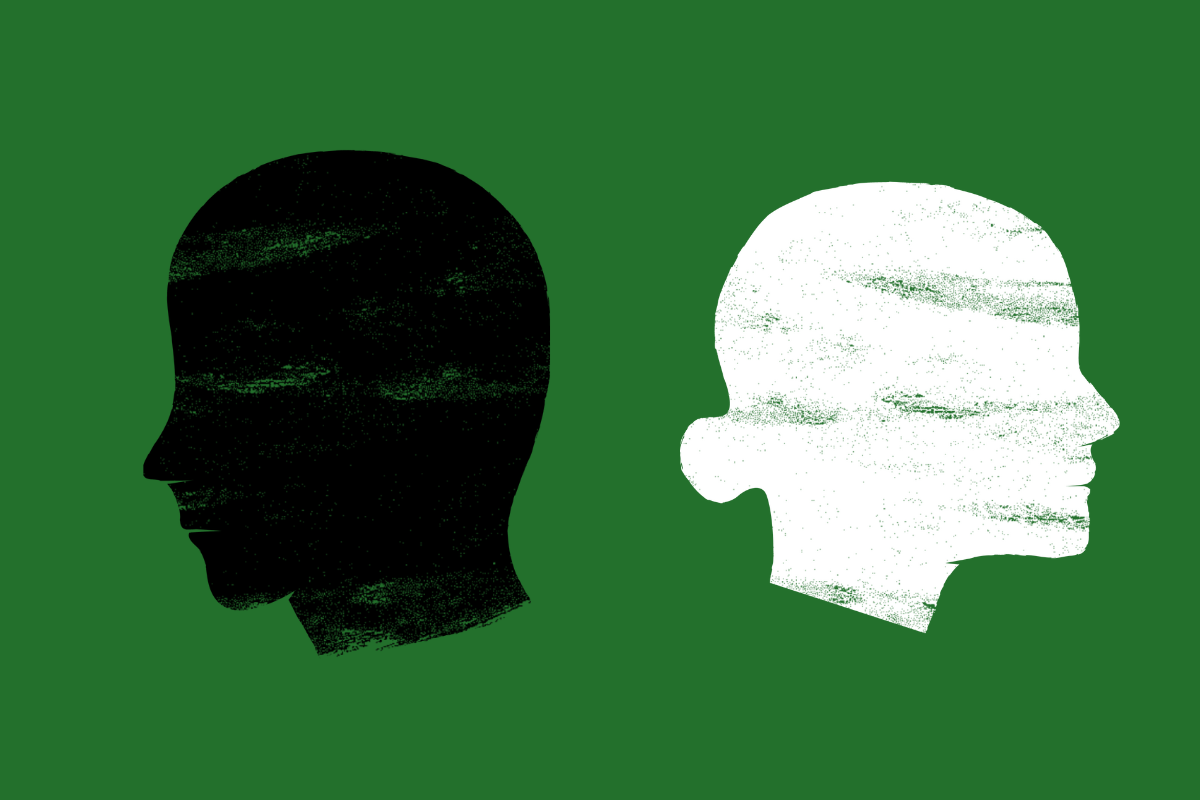Published: 5 November 2017
Last updated: 4 March 2024
Very few schools, however, taught their students what almost invariably happened within a few years of the discoveries of the great explorers: the expansion of white pastoralists and their domesticated animals into areas that had previously been occupied by indigenous clans for at least 60 millennia, the expropriation of their land, the destruction of their language, culture and society, and the massacres of tens of thousands of them in hundreds of locations all over Australia.
The Myall Creek massacre, which involved the horrific murder of 28 men, women and children at Myall Creek Station in the New England district of northern New South Wales on 10th of June 1838, is commemorated today by a memorial overlooking the valley where the murders occurred. That memorial has come to represent the multitude of massacres that occurred all over Australia during a period of more than 120 years.
The reason for that is because we know more today about the murders at Myall Creek than any of the hundreds of other massacres of indigenous people that occurred all around Australia. We know so much today about this one largely because of the investigation and the two trials of the perpetrators that were conducted in 1838.
The man who successfully prosecuted the two trials of those responsible for the massacre was the then Attorney General of New South Wales, John Hubert Plunkett. It was, in my view, the greatest challenge of his long career and one of his greatest achievements.
Unusually for the times, there were two trials that arose from the massacre, and both provoked enormous controversy and hostility towards the prosecutor throughout the colony. The powerful forces of the landowning settlers were pitted against Plunkett. His approach to these prosecutions was innovative and bold in equal measure. He faced massive difficulties in overcoming bigotry and vested interests and, in many respects, he had both hands tied behind his back.
His biggest hurdle was that, despite the fact that there had been an eyewitness to the massacre – the indigenous station-hand Yintayintin (known by the English name Davy) – the law at that time prevented Plunkett from calling him to give evidence in court. Plunkett spent the next twenty years trying to remedy this deficiency in the law – without success. New South Wales was one of the last jurisdictions in Australia to allow Aboriginals to give unsworn evidence in court.
It is instructive to look closely at the long-term effects of the Myall Creek murder trials. The 1838 trials marked one of the few times in the history of Aboriginal displacement that Europeans were punished for the murder of Aboriginal Australians. Those trials stand as an early statement of principle that Australian courts had at least the capacity to operate without fear or favour and to treat all people, including those on the margins of white society, equally.
[gallery columns="1" size="large" ids="15249"]
That is not to say that the law always operated in this way, or even that it frequently did during the colonial period; but on the occasion of the Myall Creek murder trials it certainly showed resilience and determination. Plunkett's advocacy and tactics at the second trial succeeded in persuading a jury of twelve white free men and freed men (ex-convicts) to convict seven white defendants for the brutal slaying of an Aboriginal child, who represented the twenty-eight members of the Wererae tribe who had been murdered.
That Plunkett was able to do that in the face of almost universal hostility to the prosecution was nothing short of miraculous. It would never happen again during the colonial period, or even after the federation of the Australian States in 1901.
There is no doubt that the trials failed to stem the tidal wave of annihilations of the Aboriginal inhabitants of Australia. The hanging of seven of the perpetrators of the massacre merely served to drive future murderers underground, so that they used more surreptitious means, such as poisonings, instead of brutal, bloody slayings by sword or bullet or herding over cliffs or into swamps.
However, one cannot assess the significance of the Myall Creek murder trials merely by that measure, just as one cannot assess the success of the Nuremburg trials in Europe after the Second World War by the number of genocides that have taken place since in various parts of the world.
In my view, the two Myall Creek trials in 1838 were more akin to modern-day war crimes trials than to domestic murder trials, even though the concept of war crimes lay more than a century in the future. There was undoubtedly an ongoing, internal, frontier war at the time, albeit rather one-sided, between the white settlers and the indigenous inhabitants whom the former were attempting to displace and disperse.
The war against the indigenous population involved a systemic policy, often approved or acquiesced in by the white authorities, of unlawfully exterminating those Aboriginal people who stood in the way of the expansion of the English settlement or who posed a threat to the white pastoralists and their farming activities.
By modern-day standards, the actions of the Myall Creek murderers were war crimes and part of a deliberate, state-sanctioned genocide of the Aboriginal people that today would be punishable by the rules of international criminal law
In my view, the perpetrators of the murders at Myall Creek Station on 10th June 1838 were motivated by genocidal intentions and their actions were an example of what we now call 'ethnic cleansing'. The fact that almost the whole tribe was decimated - including old men, women and children - demonstrated only too clearly their genocidal intent.
The subsequent sexual abuse of one female indigenous victim, who was spared her life, but only for what must have been a few excruciating days, illustrated the objectification of the victims. Recent analysis has shown that sexual violence often goes hand-in-hand with genocide, and that is why systemic sexual offences against enemy populations are now categorised as war crimes.
In addition, the actions of the perpetrators can be viewed as a classic example of what has become known as 'collective punishment' - a form of retaliation whereby a suspected offender's associates, neighbours, or an entire ethnic group is targeted for punishment, even though the punished group may have no link to the act that is being punished.
The actions of the Nazis in occupied Europe were a classic example of collective punishment when they would massacre 100 males in a village where local partisans had killed a single German soldier. The victims in this case had been living peacefully on Myall Creek Station for several months and had done nothing to justify their victimisation.
Collective punishment has been categorised as a war crime since the 1949 Fourth Geneva Convention and genocide has been categorised as an international crime by the Genocide Convention that was adopted by the United Nations General Assembly in 1948 and came into force in 1951.
By modern-day standards, the actions of the Myall Creek murderers were war crimes and part of a deliberate, state-sanctioned genocide of the Aboriginal people that today would be punishable by the rules of international criminal law.
The fact that vast numbers of genocidal murders in colonial Australia went unpunished would today provide evidence of state sanction, and would justify international intervention in the prosecution of the perpetrators and their national leaders who stood by and did nothing to stop the murders.
While such laws did not exist in 1838, the approach taken by John Hubert Plunkett towards the case was consistent with them, and demonstrated an enlightened and visionary attitude that was unparalleled in his time or for more than a hundred years afterwards.
John Plunkett did not just prosecute 11 men for murder. He prosecuted his entire society for its connivance in the attempted annihilation of the Aboriginal people and their culture. His contemporaries, consciously or subconsciously, appreciated that fact, and as a result vehemently resented him during the trial and for years afterwards.
It was a testament to his persistence and tactical skills that he convinced twelve jurors to convict seven of the perpetrators, because they were not only condemning those men to their deaths, but also stingingly rebuking their own society.
The perpetrators of the murders at Myall Creek Station on 10th June 1838 were motivated by genocidal intentions and their actions were an example of what we now call 'ethnic cleansing'.
While the trials and the convictions did not prevent future massacres, they stand as a beacon of humanity and interracial justice that illuminated the way for Australia to develop as a civilised nation many years later.
In my opinion, the story of what happened to the aboriginal inhabitants in colonial times should be taught in our schools as readily as we teach the exploits of the great explorers. The two accounts are inextricably intertwined. One almost inevitably followed the other.
A real acceptance by mainstream Australia of the horrors that were perpetrated against our indigenous communities during the colonial period, and into the early years of the 20th century, will bring with it an understanding of the long-term trauma and sense of powerlessness that has been transferred down the generations of our indigenous fellow citizens until today.
We readily recognise that the trauma of other genocides and crimes against humanity – such as those during the Nazi period in Europe, in the former Yugoslavia during the 1990s, and in countries like Rwanda and Cambodia – can be deeply felt for many generations after the killings have ended.
If we acknowledge that Aboriginal communities were subjected to massacres in a multitude of locations all over Australia for more than a century, there may be more sympathy for the current generations striving for equanimity, understanding, and empowerment.
Until we recognise that what occurred was a war of extirpation or annihilation, until we acknowledge that what was perpetrated amounted to an attempted genocide that today would be categorised as a war crime, and until we teach this to our children, we will not reach our full maturity as a nation.
This speech was delivered at the launch of Genocide Perspectives V, a book honouring the work of Professor Colin Tatz, at the Sydney Jewish Museum on October 19
SEE FULL REPORT OF THE LAUNCH
Photo: Myall Creek Walkway plaque




